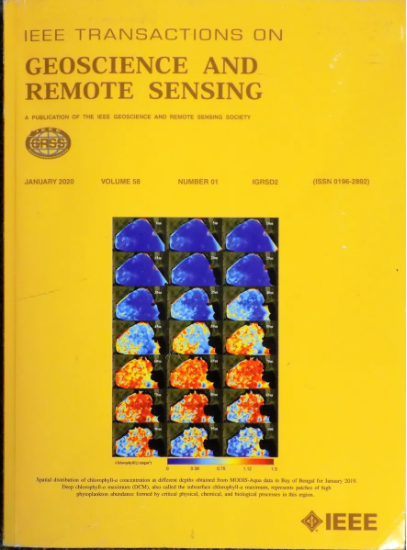GMODet:基于区域感知和语义-空间递进交互的光学遥感图像地面运动目标实时检测器
IF 8.6
1区 地球科学
Q1 ENGINEERING, ELECTRICAL & ELECTRONIC
IEEE Transactions on Geoscience and Remote Sensing
Pub Date : 2025-01-07
DOI:10.1109/TGRS.2025.3526799
引用次数: 0
摘要
军事冲突对国家安全和生态环境具有重大影响。对复杂场景下地面移动物体的有效探测方法可以进一步用于评估损害,并为安全和环境恢复提供建议。当前光学遥感图像中地面运动目标的检测一直在努力平衡检测精度和实时性,阻碍了对地面运动目标的及时评估。为了解决这一问题,本研究提出了地面移动目标检测器(ground-moving object detector, GMODet),一种结合区域感知和语义空间交互的实时检测方法,以增强对复杂环境中部分遮挡和细粒度目标的检测。该框架包括三个模块:区域感知模块(RAW)、跨尺度上下文感知特征聚合器(CCFA)和语义空间渐进交互模块(SPIM),重点提取上下文、多尺度和语义空间信息的判别特征。在公开的军用车辆遥感数据集(MVRSD)上进行实验,构建了具有四种目标类型和高场景复杂度的地面运动目标数据集(GMOD)。GMODet达到了最先进的性能,mAP50、mAP75和mAP的得分分别为GMOD的65.5%、48.5%和42.3%,比第二名的成绩分别高出1.9%、5.1%和1.5%。在MVRSD上,mAP50、mAP75和mAP的得分分别达到88.2%、75.2%和61.7%。值得注意的是,GMODet在大规模图像(9152 × 9152 ×像素)上的推理时间仅为25秒,在地面移动目标检测中展示了出色的准确性、速度、鲁棒性和泛化。本文章由计算机程序翻译,如有差异,请以英文原文为准。
GMODet: A Real-Time Detector for Ground-Moving Objects in Optical Remote Sensing Images With Regional Awareness and Semantic–Spatial Progressive Interaction
Military conflicts have a significant impact on national security and the ecological environment. Effective detection methods for ground-moving objects in complex scenarios can be further utilized to assess damage and provide recommendations for security and environmental restoration. Current ground-moving object detection in optical remote sensing imagery struggles with balancing detection accuracy and real-time performance, hindering timely threat assessment. To address this, the study proposes ground-moving object detector (GMODet), a real-time detection method incorporating region awareness and semantic-spatial interaction to enhance the detection of partially occluded and fine-grained objects in complex environments. The framework includes three modules: the region awareness module (RAW), cross-scale context-aware feature aggregator (CCFA), and semantic-spatial progressive interaction module (SPIM), focusing on extracting discriminative features for contextual, multiscale, and semantic-spatial information. A new dataset, ground-based moving object dataset (GMOD), is constructed with four object types and high scene complexity, alongside experiments on the publicly available military vehicle remote sensing dataset (MVRSD). GMODet achieves the state-of-the-art performance, with mAP50, mAP75, and mAP scores of 65.5%, 48.5%, and 42.3% on the GMOD, outperforming the second-best results by 1.9%, 5.1%, and 1.5%, respectively. On the MVRSD, it achieves mAP50, mAP75, and mAP scores of 88.2%, 75.2%, and 61.7%, respectively. Notably, with an inference time of just 25 s on large-scale images ( $9152\times 9152$ pixels), GMODet showcases outstanding accuracy, speed, robustness, and generalization in ground-moving object detection.
求助全文
通过发布文献求助,成功后即可免费获取论文全文。
去求助
来源期刊

IEEE Transactions on Geoscience and Remote Sensing
工程技术-地球化学与地球物理
CiteScore
11.50
自引率
28.00%
发文量
1912
审稿时长
4.0 months
期刊介绍:
IEEE Transactions on Geoscience and Remote Sensing (TGRS) is a monthly publication that focuses on the theory, concepts, and techniques of science and engineering as applied to sensing the land, oceans, atmosphere, and space; and the processing, interpretation, and dissemination of this information.
 求助内容:
求助内容: 应助结果提醒方式:
应助结果提醒方式:


